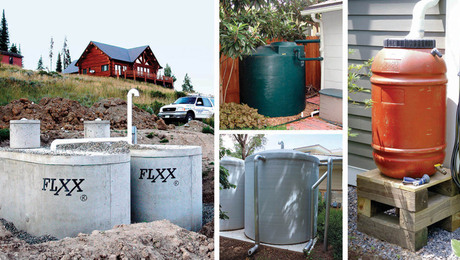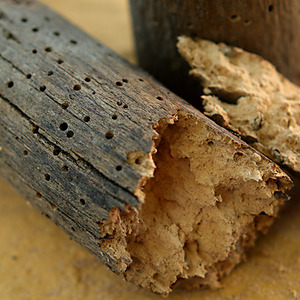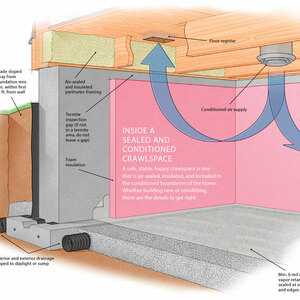i am installing 24″ wide galvanized roof panels over 2×6 joists with 2×4 purlins. the panels are flat with V grooves every 12 inches. i will install with screws with rubber washers. screwing through the ridges only seems to make sense for waterproofing, but it tends to raise and bow the flat portion. i’ve seen screws in the middle of the flat portion, and in the V where the panels overlap. any suggestions?
thanks


















Replies
What's the manufacturer say?
Birth, school, work, death.....................
Rule of thumb that came out of another thread on this issue is screw in the flats, nail on the ridges.
Try searching with key words "screw nail metal roof" without quotes.
johnnyd got it right.
Check with your supplier. They should be able to provide you with an installation guide for the specific product you are using. It will tell where to place the screws and the spacing as well a lap direction.
Dave
The typical recommended schedule for 5v-Crimp and similar patterns is 4 fasteners across the 24" sheet, per purlin. The fasteners should be placed 1"-2" to the side of the outside Vs and inside V's. However, refer to the manufacturer's instructions - should be available onliine. Wheeling Corrugating is one of the larger manufacturers, and they do have the docs online.
I have seen one manufacturer recommend fastening through the V's, but I believe this to be a bad idea. It is very difficult to get proper alignment on the Vs with screws, and you end up with a number of connections that will not properly seal with the screw gaskets. And then the roof looks like dirt with patches.
The other critical dimension is the spacing of purlins. I see most manufacturers recommending 5/8" or greater sheathing rather than Purlins, but if your going to use purlins spacing recommended spacing is no greater than 24", and preferably 12"-16" if you live in high-wind areas.
Other important notes:
1) Note direction of prevailing wind and rain, and locate the overlap pattern to be going "away" from that direction, this reduces uplift issues and leaks.
2) If you are using a trated (ACQ, etc) material for the purlins, place an isolation membrane (tar paper is best) between the purlins and the sheets - ACQ is extremely corrosive.
Here's the path to Wheeling's online ref:
http://www.wheelingcorrugating.com/wc-catalog/UsersGuide/index.htm
Edited 10/7/2005 10:03 am ET by esanborn
thanks everyone for the great information. turns out wheeling is who my yard uses, and their web site had their requirements.
put the screws in the flats and be sure not to run them down to tight. if you push the neoprene washers out from under the head of the screws the uv rays seem to break them down.
Regardless of the pattern, I was taught to drill oversize holes for the screws. If the hole is tight, movement of the corrugated due to temp change will cause it to shear off the screw head over time.
Bruce
The High Desert Group LLC
"Fine homes done right, one at a time"